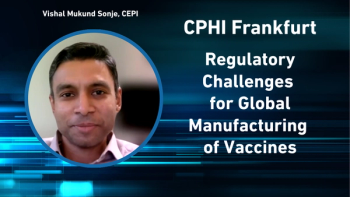
Equipment and Processing Report
- Equipment and Processing Report-05-19-2010
- Volume 0
- Issue 0
Online Process Monitoring Can Satisfy Patients and Regulators
Online process monitoring could help companies achieve the dual goals of ensuring high end-product quality and satisfying regulatory demands.
Incidents such as McNeil Consumer Healthcare’s (New Brunswick, NJ) May 2010 recall of over-the-counter children’s and infants’ liquid products remind patients and drugmakers alike that they cannot take high product quality as a given. Greater process monitoring and control could help reduce manufacturers’ chances of creating out-of-specification dosage forms. Maintaining a constant state of control is essential to staying in the good graces of the US Food and Drug Administration. Online process monitoring could help companies achieve the dual goals of ensuring high end-product quality and satisfying regulatory demands.
To find out more about quality assurance and process control, Equipment and Processing Report talked to Tim Mohn, industry principal at Sparta Systems (Holmdel, NJ) and former manager of worldwide quality systems at the Ortho-Clinical Diagnostics division of Johnson and Johnson (New Brunswick, NJ).
EPR: Does industry expect FDA to perform more unannounced audits in the future?
Mohn: I think the agency is going to be having more of an arm’s-length relationship with industry. Previously, it tended to be a little bit more collaborative. Frankly, I think it’s based a lot on what’s happening with the informed consumers and high-publicity cases of recent months with problems in the pharmaceutical, device, and food sectors. The American consumer is demanding an independent review from FDA. Naturally, FDA will exercise its powers to fulfill that objective, which would include unannounced audits, and also, in general, more scrutiny across the board.
EPR: What kind of quality issues might FDA look for during an unannounced audit?
Mohn: In many ways, I think it would be similar to what they do today, which is really looking to see whether manufacturers are operating in a state of control. Some of the failure modes that you might have seen as a result of some of these highly publicized recent issues, things like supplier controls and responding to customer complaints, might be a focus because of the recent challenges that we’ve seen. And also change control. We’ve seen instances where change control hasn’t been as robust as it should have been, whether it be in introducing process changes, changing facilities of manufacture, or appropriately managing supplier changes as part of a firm’s own quality system. I would expect increased focus on impact assessment of changes before implementation.
EPR: Can online quality monitoring help a company observe potential concerns internally before an audit might take place?
Mohn: Absolutely. We’re finding that simply using a sheet of paper to track something to closure doesn’t allow one to look at macrotrends and see what’s happening, whether across multiple sites or even within a single site. Technology can help with that, whether applications such as on-line change control or monitoring defects in the manufacturing process and asking, “Are there some commonalities that wouldn’t be apparent if I didn’t have technology to look across operations?”
EPR: What approaches can companies take to establish process monitoring?
Mohn: The first step to any process is understanding what makes the process work. You’re going to want to understand what the critical quality attributes (CQAs) and the critical process parameters are. It doesn’t matter what technology you use: if you don’t know what makes your product work, you can’t be successful.
After you understand your process CQAs, then the next step is to understand how to control them. It’s important to focus monitoring and control efforts on high-risk areas in the process, and this is an area where software packages can help. Companies need to track the data elements and ensure the process is consistently followed. When a nonconformance happens, how do you track the issue to closure and ensure that nonconforming products are not released to the customer? The technology used to control the process depends on what your product is. But once the problem is identified, how it’s resolved is equally important. There’s probably a different technology strategy for each, one for the monitoring, and one for the resolution.
EPR: Could a monitoring regime help a company reduce downtime in its manufacturing operations?
Mohn: Without question. Of course, the monitoring is only as good as the data it’s evaluating. It goes back to whether you are tracking the right stuff, and that’s part of the design process, understanding what makes your product tick. So long as you know what you’re supposed to monitor and you select a way to monitor it, you can have impacts, frankly, all over the supply chain—from the time it takes to build a product, to how much inventory should be kept on hand, to the resulting product quality. The control points for what constitutes quality might be able to be tightened based on better process control and monitoring. All of these benefits are also good for the consumer.
Articles in this issue
over 15 years ago
Using Strategic Data Management to Boost Efficiencyover 15 years ago
May 2010 Editor's Picks: Products from ATMI and SciLogNewsletter
Get the essential updates shaping the future of pharma manufacturing and compliance—subscribe today to Pharmaceutical Technology and never miss a breakthrough.





